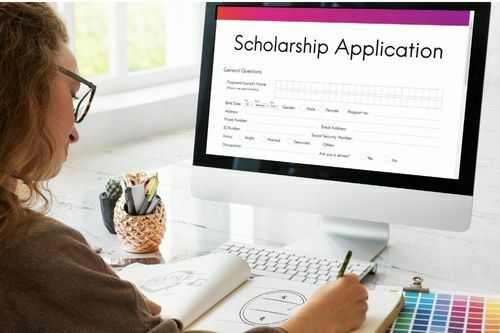Table of Contents
- MIT Scholarship for students
- MIT Graduate Funding Programs
- External Fellowships
- Student- and Major-Specific Scholarships
- Green Scholarships
- Eligibility Criteria
- Documents Required
- Application Process
- Fundamental tips to guide you through the application for MIT Scholarships
- Additional Information on MIT Scholarships
- Key Takeaways
- FAQs
Since MIT has already set a high standard, all the chosen students have outstanding academic records. As a result, Scholarships offered by MIT award grants based on a candidate’s financial need and overall economic situation.
MIT Scholarship for students
Support for students at the Massachusetts Institute of Technology varies according to their academic standing. Postgraduate students are considered for assistantships and fellowships through their respective departments, whereas undergraduate students are offered MIT scholarships through a centralized process.
Scholarship money is raised through social networking and alumni endorsements. Averaging $45,600 per applicant, this scholarship is awarded to about 58 percent of applicants.
MIT Graduate Funding Programs
Fellowships are a common source of funding for graduate students at MIT. For finding fellowships, get in touch with the Office of Graduate Education, which keeps a database of fellowships and offers guidance on how to apply for them.
Some MIT fellowships even require that you be nominated by the school deans before you can apply. For example, for the Presidential Graduate Fellowship Program. The scholarship includes tuition funding and a monthly stipend and has been established for exceptional students from all over the world.
The Office of Graduate Education (OGE) awards between $1,500 and $3,000 to one student from each department.
External Fellowships
If you are determined to pursue your studies at MIT, there are many other opportunities to consider, in addition to those offered by the university. The requirements for this program’s eligibility and selection vary greatly by country.
For instance, the Educational Foundation USIEF oversees its administration in India.
Students have a variety of options, including the Hubert H. Humphrey Fellowship Program, the Fulbright-Nehru Doctoral Research Fellowships, the Fulbright-Kalam Climate Fellowship, and the Fulbright-Nehru Master’s Fellowships for master’s degree.
Student- and Major-Specific Scholarships
Brazilian nationals are eligible to apply for the Lemann Education Fellowships. MIT offers nine-month fellowships to graduate students each year through this scholarship.
Non-government-funded scholarships, such as the American Association of University Women (AAUW), are specifically targeted at women from developing nations.
For study, research, travel, and creative work in the United States, the Asian Cultural Council offers fellowship grants to artists, scholars, students, and specialists from Asia.
People who have contributed to peace and development can apply for scholarships through Rotary Peace Fellowships.
The Aga Khan Foundation provides postgraduate scholarships to deserving students from developing countries who have no other means of financing their education.
Green Scholarships

The Young Future Energy Leaders (YFEL) offers fellowships with the goal of promoting sustainability and renewable energy among students and young professionals.
You can also apply for a scholarship through the Education for Sustainable Energy Development (ESED) program if your graduate studies at MIT are in the areas of zero-carbon energy, smart grids, electric transportation, energy storage, advanced electricity technologies, public policy, economics, law, or political science, among other relevant fields.
Eligibility Criteria
- Evidence of acceptance into an undergraduate or graduate program.
- Minimum 65% in the undergraduate degree (For those applying to PG courses)
Documents Required
- Application and CSS profile
- Statements of family income and tax returns
- February updates and notes form
- The applicant must submit the profile of the non-custodial parent if their parents are divorced.
Application Process

- One must apply for a course offered by the university in order to be considered for an MIT Scholarship. Visit the MIT admissions portal to do the same and submit an application for the desired course.
- Search for the MIT Student Financial Services on the university’s official website. You can register yourself by clicking the link on the page that directs you to the CSS profile form.
- You must carefully read the instructions and general information before submitting the application. Make sure you enter all necessary information into the application form, especially your personal and academic information.
- Once the application form has been carefully reviewed, attach the required documents as specified, save the form, and then submit it.
Fundamental tips to guide you through the application for MIT Scholarships
- All of your important documents should be prepared in advance.
- When submitting an application for an MIT scholarship.
- It is crucial to thoroughly and diligently review your scholarship application.
- Apply for MIT scholarships from all sources available.
Additional Information on MIT Scholarships
Early Action (EA) and Regular Action (RA) are the two application cycles offered by the Massachusetts Institute of Technology. There are no restrictions placed by the institution on where an MIT applicant may apply after choosing to be an Early Action.
When applying through Regular Action, the institution does not require the applicant to attend if they are accepted. However, if a student applies to a university that has a “single choice” restriction, they might not be able to apply to MIT University during the Early Action period.
Key Takeaways
Don’t forget to submit a financial aid application when requesting admission to MIT. This will open the door to numerous financial assistance opportunities.
Understand your choices. Furthermore, educate yourself on all available options, including grants, work-study programs, scholarships, and loans.
Students must also apply for outside scholarships because it can be difficult to receive internal MIT Scholarships.
Liked this blog? Read next: Give your dream wings with TATA Pankh Scholarship!
FAQs
Q1. Can I get a free education at MIT?
Answer – While MIT doesn’t offer full-time courses for free, you can choose to take one of their OCW courses instead. It is a free and open educational resource that MIT makes available to educators, self-learners, and students everywhere.
Q2. Is studying in MIT expensive for four years?
Answer – Four years at MIT costs approximately $73,150. This sum accounts for housing, food, personal expenses, books, and supplies, in addition to tuition fees.
Q3. What is the amount of the MIT Scholarship?
Answer – The financial situation of the applicant is taken into consideration when awarding scholarships at MIT.






